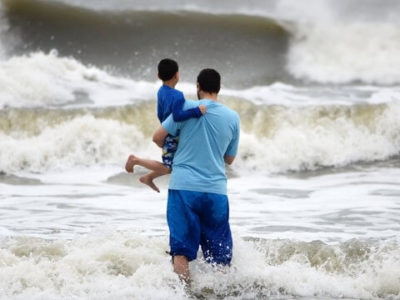Although Hurricane Sandy was nearly two months ago, east coast states are still rebuilding.
According to the Washington Post, Sandy’s damage was so extensive in severity and scope that the Red Cross, Salvation Army and other charity groups will probably experience their biggest relief effort since Hurricane Katrina.
The damage to date is still not known. By the end of November, Governor Chris Christie of New Jersey predicted at least $29 billion in damage for his state, according to the Huffington Post. The LA Times reported at the beginning of November approximately $50 billion in damage for several states.
On Dec. 4, FEMA denied the state of Maryland's request for $27 million in aid, clamining the damage was not severe enough, according to the Baltimore Sun.
Luckily, there are other sources for help.
By Friday, Nov. 9 the Red Cross had gathered $117 million to support their effort, most of the money coming from individual donations spanning from 10 states plus Washington, D.C. and Puerto Rico. The Salvation Army had raised $5 million by Friday, primarily through virtual donations, conducted mostly online and some by phone, according to the Washington Post.
Other recent natural disasters such as Hurricanes Ike and Gustav and the California wildfires also placed a large burden on the charity groups, but because Sandy targeted an intensely populated region of the Northeast, the damage control for Sandy may prove to be more taxing than the others, according to the Washington Post.
It’s hard for areas who escaped Sandy’s wrath to picture the long lasting effects, but two weeks after the storm hit, more than 470,000 power outages still are in full effect in New York and New Jersey. Nationally, the Red Cross has already provided more than 3.2 million meals and 1110,000 shelters for those affected, according to the Washington Post.
The Red Cross and the Salvation Army are making efforts to improve the donation process, and make it as easy as possible for people to help out.
One specific method has gained attention on college campuses: donations through text message. College students are glued to their phones; therefore the text message donation links have proved to be an effective way to gain college student’s attention.
The way the text message method works is the user texts a word to an organization-designated number, and the $10 donation is then added to the user’s phone bill.
To donate money to the Red Cross, students can simply text “REDCROSS” to 90999, or text “STORM” to 80888 to give to the Salvation Army.
Students across the country have begun efforts to fundraise for those suffering from Sandy’s long-term effects. Colleges in the affected regions have made significant efforts.
Roger Williams University students Kimberly Sanders and Mary Rooney created RWU Combats Sandy, a group targeted at helping Sandy victims, according to wpri.com, a news affiliate for Rhode Island.
Students at SUNY Binghamton created collection boxes around campus, which helped raise over $7,000 worth of items. Students donated blankets, canned foods and water among other necessary items, according to wbng.com, a news affiliate for upstate New York.
Union College’s students rallied to gather important items on their campus as well, to be sent to New York City, according to Union’s website.
University of Maryland Junior Chris Neely, from Hazlet, N.J., said his family experienced Sandy’s devastation first hand when his family’s beach house and restaurant were destroyed. “I feel lucky honestly,” Neely said. “Yeah my family’s restaurant and beach house are ruined, but I still have a home, I have a bed, and I have all of my family members. That’s more than a lot of people were left with, so I feel very lucky.”
University of Maryland students Tori Kane and Chelsea Pasahow, from Margate, N.J., are helping their fellow New Jersey peers by setting up donations boxes in every sorority house on the University of Maryland campus to help collect toilet paper, tooth brushes, food and other items.



















